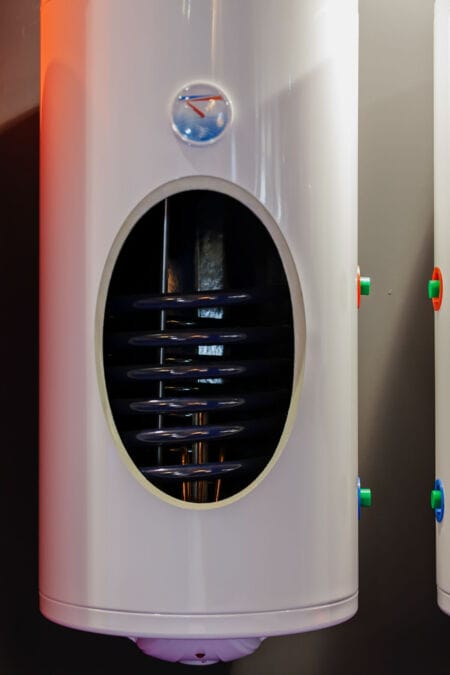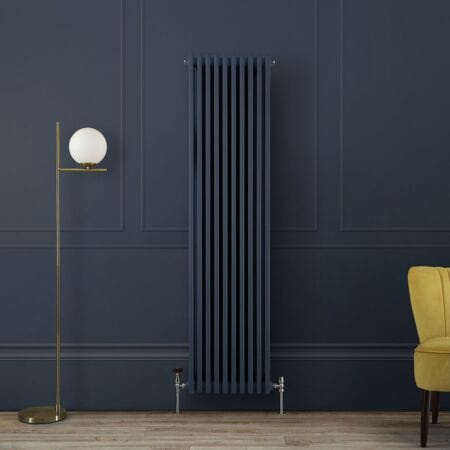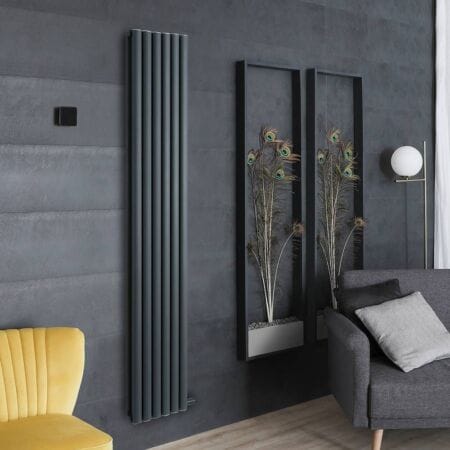Contents
ToggleWhat we'll cover...
Tips for striking the right balance between BTU output and energy usage, to help keep your heating costs down.
Key tips for low cost, high output heating
Of course, we all want the Goldilocks of home heating. Not too cold. Not too costly. Just right. Essentially, a powerful, toasty designer radiator that doesn’t drain your energy or your wallet.
But with all the chat about BTUs, eco-efficiency, smart heating controls and gas prices rising like sourdough starters in lockdown and beyond, it’s easy to get lost in the heat.
So here’s the big question: Can you have a high BTU radiator that doesn’t guzzle energy? Or is that the central heating equivalent of having your cake and eating it too?
The good news: yes, you absolutely can. But it takes a bit of know-how. Which is exactly why BestHeating are on hand.
What is a BTU?
Before we go any further, it is probably worth explaining what a BTU actually is. BTU stands for British Thermal Unit, and it’s basically a fancy way of measuring how much heat a radiator can throw out.
The BTU Breakdown:
- 1 BTU = the energy needed to raise the temperature of a single pound of water by 1°F.
- In radiator world (what a theme park that would be): the higher the BTU rating, the more heat the radiator can produce.
Sounds simple? It is, but bigger isn’t always better. A 10,000 BTU radiator in a small, well-insulated room might be total overkill. Like putting a jet engine on a lawnmower. And that’s where energy use starts to spiral.
Energy use and the BTU figures
Here’s the twist: BTU isn’t the villain. What really determines your energy use is:
- How efficiently your radiator turns fuel into heat
- How often it runs
- How much heat escapes your home
- How smart your heating system is
So while BTU tells you how much heat is available, energy efficiency tells you how little energy is needed to deliver that warmth.
How to calculate the right BTU output for your room
You don’t want a radiator that’s too weak – it’ll constantly run at full pelt and use more energy than it needs. And if it’s too powerful, it’ll heat the room in no time…then keep blasting heat into the abyss.
To hit that Goldilocks zone, you need to calculate the correct BTU for your space. Factors to consider:
- Room size (length × width × height)
- Window size and type
- Wall insulation
- Room function (bathrooms need more heat than bedrooms)
- External walls vs internal rooms
Top tip: Use a BTU calculator to get an accurate figure – and don’t forget to factor in heated towel rails or underfloor heating if you’re layering up. View more tips in our dedicated guide, BTU explained: How to choose the right radiator output.
How radiator efficiency makes a massive difference
It is entirely possible to have a 9,000 BTU radiator that runs more efficiently than a 6,000 BTU one – if it heats faster, distributes warmth better, and loses less energy along the way.
What impacts radiator efficiency?
- Material: Aluminium radiators heat up quickly and cool quickly, perfect for zonal control. Radiators with a steel construction will retain heat for longer.
- Design: Convector fins, dual panels and other design tweaks boost surface area and improve heat output.
- Placement: Shoving a powerful radiator behind a sofa is like putting a megaphone under a pillow. Useless.
- System compatibility: Radiators that play nicely with low-temperature heat sources (such as heat pumps) offer much better overall efficiency.
Smart controls: The secret sauce for energy savings
Enter stage left: smart heating technology. This is where you really start winning in the high BTU/low energy equation.
A powerful radiator running full blast 24/7 = chaos.
The same radiator controlled by a clever thermostat, smart TRVs, and a learning schedule = calm, controlled, efficient comfort.
Essential smart heating features
- Zonal heating: Only heat the rooms you’re actually making use of.
- Scheduling & geofencing: Heat your home when you’re there. Don’t bother when you’re not.
- Learning thermostats: They adapt to your habits, learn your preferences, and avoid waste.
- Open window detection: Cuts off the heat if you’ve left a window open to cool down.
Smart heating systems keep your high BTU radiators working only when necessary, which is the key to an energy efficient heating performance.
Don't skimp on insulation
Here’s the hard truth: even the most efficient radiator on the planet can’t win a battle with physics. If heat’s flying out of your windows, roof, or walls, your system will work overtime to replace it – and you’ll be left wondering how to keep energy bills down.
Quick fixes for optimal gains:
- Upgrade to double or triple glazing
- Install draught excluders beneath doors and nearby windows
- Add radiator reflector panels to bounce heat back into the room
- Insulate the loft (the area from where most heat escapes)
- Fit smart blinds or thermal curtains for better heat retention
Think of insulation as your radiator’s best mate – it allows it to take its flowers in the spotlight without making it work any harder than necessary.
Radiator material showdown: Which heats best?
The radiator’s material makes a massive difference in both BTU output and energy usage. Here’s the cheat sheet:
|
Material |
Heat-Up Time |
Heat Retention |
Best For |
|
Aluminium |
Very fast |
Low |
Quick bursts of heat, smart systems |
|
Mild Steel |
Moderate |
Good |
Versatile, budget-friendly |
|
Cast Iron |
Slow |
Excellent |
Period homes, long heat cycles |
|
Stainless Steel |
Moderate |
Very good |
Bathrooms, towel rails |
Aluminium radiators are the most efficient option for those chasing that high-BTU, low-usage sweet spot (the Goldilocks zone). They heat up rapidly, work brilliantly with smart controls, and cool quickly when not needed – ideal for reactive heating.
Common BTU and energy use misconceptions
Let’s clear up a few myths before they trip anyone up:
- “High BTU = high bills.”
Not necessarily. Efficiency, smart control, and insulation are more important than raw heat output figures. - “One radiator can heat the whole house.”
Nope. That’s like expecting one candle to light a stadium. Rooms need tailored heating. - “Bigger is always better.”
Oversized radiators can lead to short cycling and uneven heating, aka waste and unnecessary excessive energy usage. - “Underfloor heating makes radiators redundant.”
Not true. Underfloor heating works well with low flow temperatures, but radiators still offer zonal control and faster warm-up times.
High BTU and low energy use: Is it possible?
Well, if you’ve made it this far, you’ll have an idea on what the bottom line is regarding high BTU outputs and low energy usage.
You can have high BTU radiators and low energy use. But you need:
- A correctly sized radiator in line with room size and layout
- A smart heating system for energy efficient usage control
- Well-insulated surroundings
- The right radiator materials and proper installation practices
- A bit of common sense and fine-tuning to make your heating work best for you
When everything works in harmony, you get the kind of heat that makes cold mornings bearable, without the kind of bills that make your eyes water.
Strike the right BTU balance with BestHeating
Now you know it’s possible, you can set about striking the perfect balance between BTU output and energy use with the array of excellent heating options on offer from BestHeating.
Explore our impressive choice of radiators and heated towel rails in all sorts of shapes and sizes, in addition to underfloor heating and smart heating solutions that embrace and enhance efficiency.
Let us know what heating tweaks you make to find your ideal range from heat output to energy expenditure in the comments, or by reaching out to us on Instagram, Facebook or X.
John is a Research Specialist for the Best Heating Advice Centre, where for over nine years he has dedicated himself to demystifying home heating for our customers. He specialises in creating clear, data-driven guides and how-to articles by collaborating directly with our team of certified heating experts and product engineers.
His work, built on a foundation of journalistic research, has helped millions of readers make confident and informed decisions about their home heating. When he’s not breaking down the heat output differentials from radiators to heated towel rails, John fancies himself as a fine football and music connoisseur.








